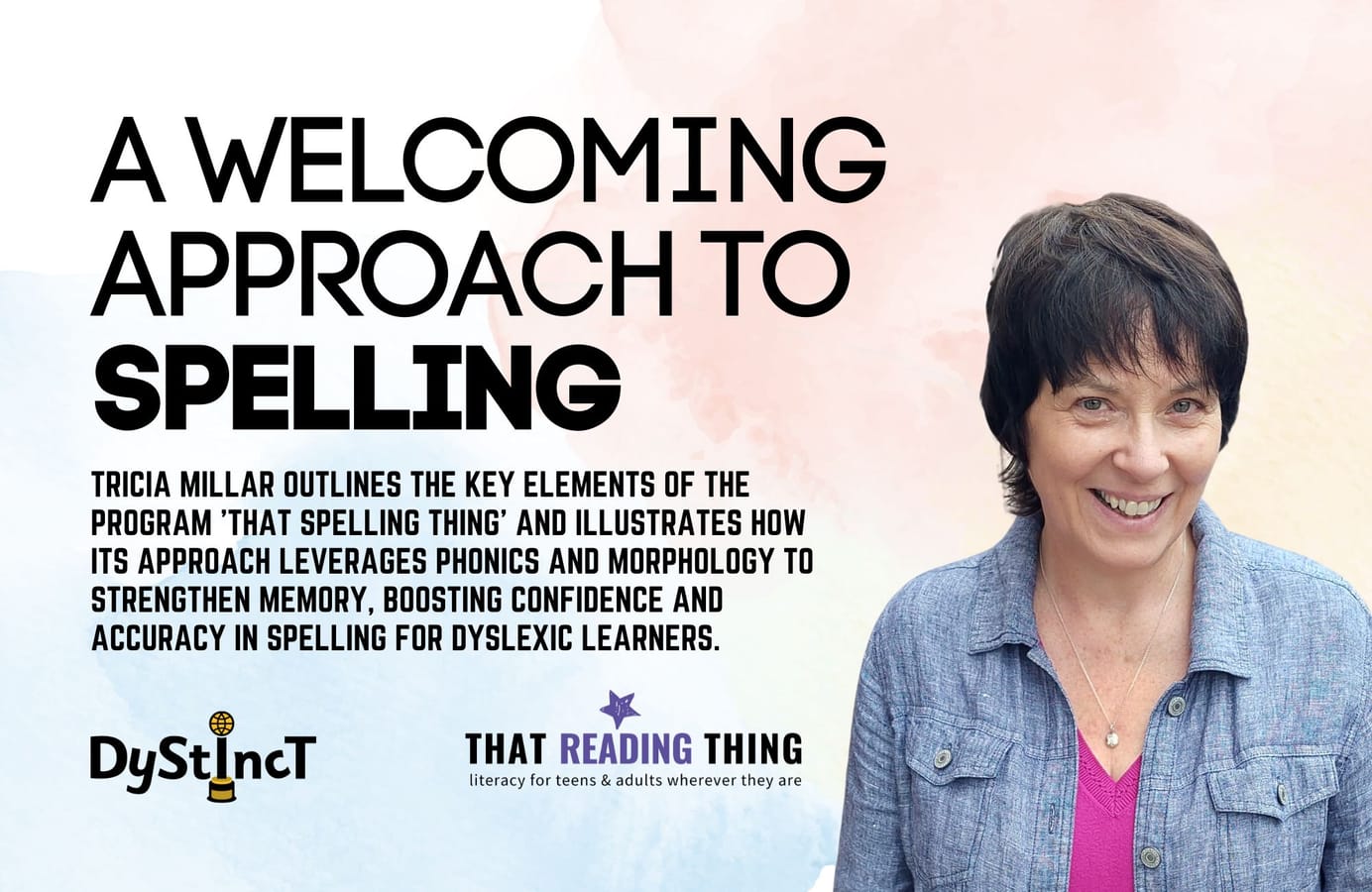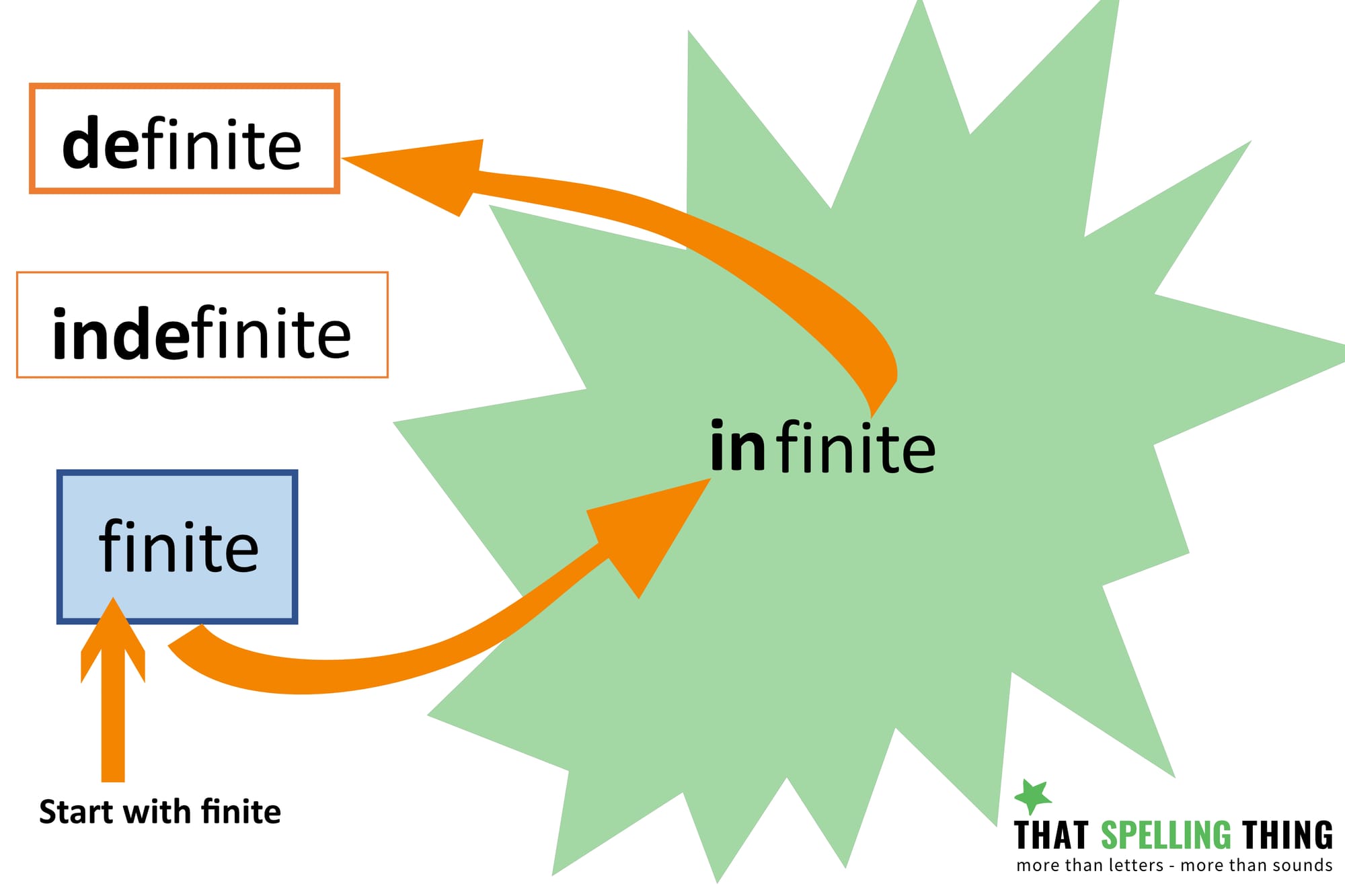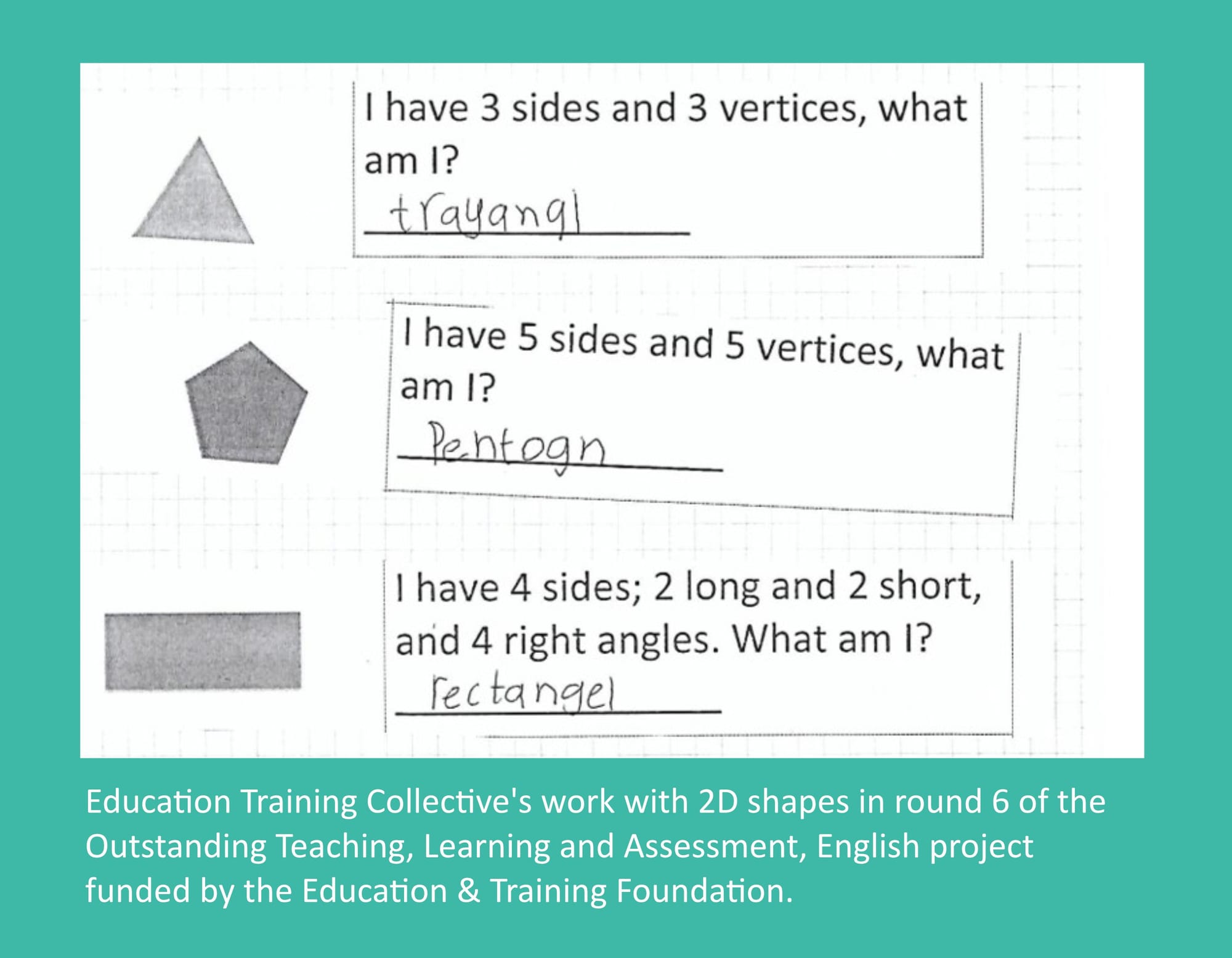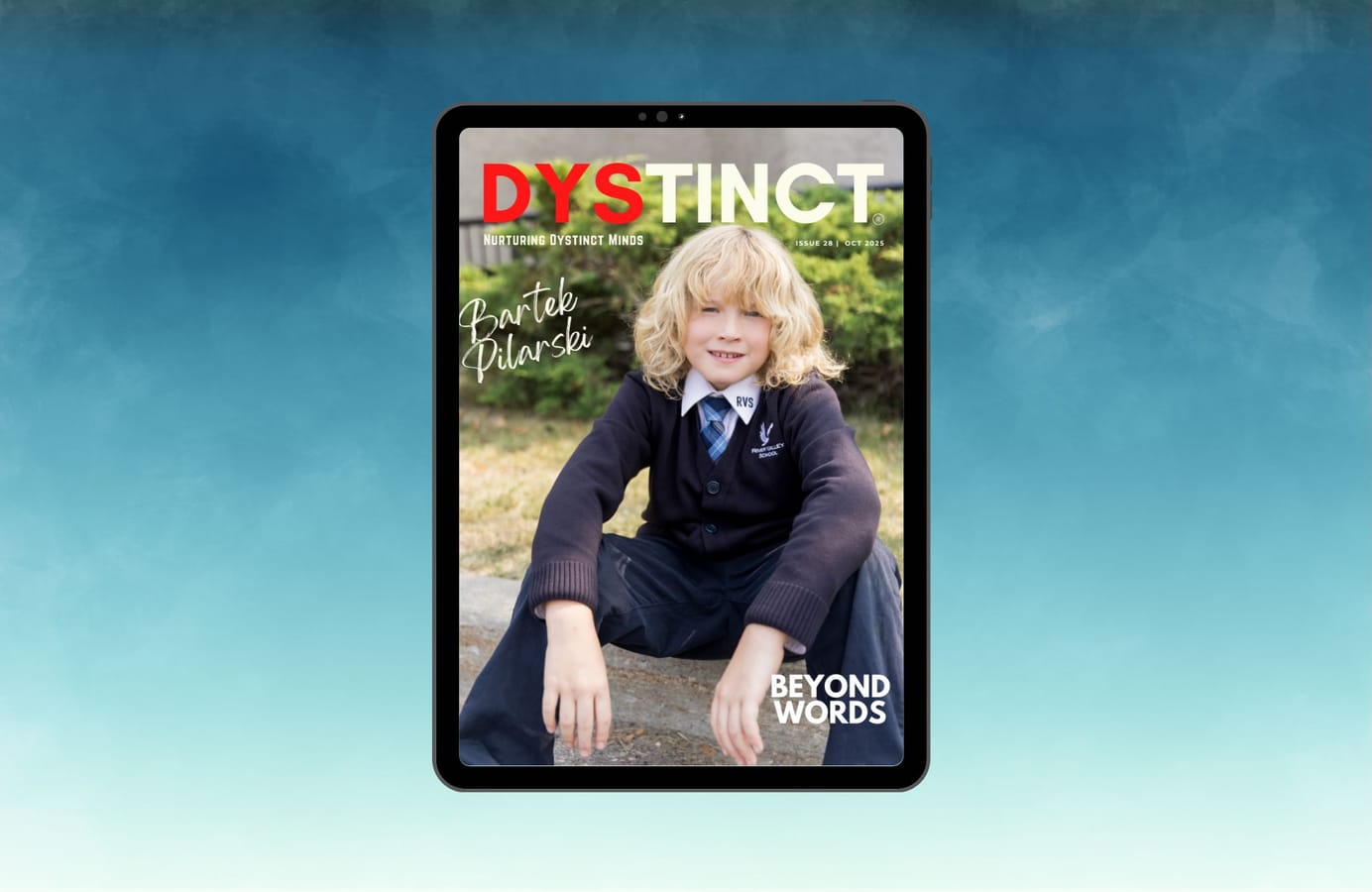
Issue 23: A Welcoming Approach to Spelling? | Tricia Millar
Tricia Millar outlines the key elements of the program 'That Spelling Thing' and illustrates how its approach leverages phonics and morphology to strengthen memory, boosting confidence and accuracy in spelling for dyslexic learners.
One day, I received an email from a 62-year-old dyslexic man, which ended, 'I just want to be able to misspell with confidence like everybody else.'
Another day, a science teacher in a special school asked, 'Can you please just get them to spell 'fractional distillation'?'
My background is in English language and linguistics, and I love nothing more than delving deep into our wonderful, rich, huge, language. As a literacy professional and programme creator, I sometimes wonder if I should be injecting more morphology, more etymology, and more top-down teaching, but then I come back to the needs of those two individuals.
How do we help teens and adults who've struggled for years gain enough confidence in their spelling to feel 'like everyone else'? Equally important, how do we help non-specialist teachers, parents and support staff to confidently answer, 'How do you spell words like fractional distillation?' or ‘definite’ or ‘inseparable’, especially those who feel less than confident about their own spelling?
That Spelling Thing Framework
That Spelling Thing Framework
Accurate spelling requires memory, and no course, book or gimmick will magically change that. However, we can reduce the amount of memory required by carefully scaffolding the process. Students work through a consistent series of prompts. They learn an internal script that helps them identify what's easy and predictable about a word and where they need to focus their limited memory.
The four main ingredients are:
- Phonics (spoken syllables, sounds and how to spell those sounds).
- 'Everyday' morphology and limited etymology
- That Spelling Thing script
- Grapheme puzzle
Phonics
spoken syllables, sounds and how to spell those sounds
Phonics
Phonics isn't the whole answer for spelling, but it provides a solid foundation on which to build knowledge about English orthography. There are no syllable types or rules to learn. Instead, we start with the student's own voice and accent and introduce them to their 'internal translator' to turn normal speech into accurate writing.
'Everyday' morphology and limited etymology
'Everyday' morphology and limited etymology
From the very beginning of learning to read with That Reading Thing, we 'nudge spoken syllables for meaning'. If a student wants to spell 'fighting' and says the syllables as 'figh/ting', we nudge that to 'fight/ing' as a quick way to introduce the concept of morphology.
'Everyday' means looking at words as they are now rather than examining Latin, Greek and even older roots. For instance, I suggest teaching 'definitely' (a word on many spelling lists) by starting at 'finite' and adding de- then -ly with a brief explanation of the two senses of de-. Some would say we should start at 'fin' but I'm not convinced this depth would support rather than overload memory.

We keep etymology, even the most interesting word stories, to a minimum because dyslexic students say they find the extra knowledge distracting when they're working hard to spell accurately. You can always read about words in a separate lesson.
In subjects like maths and science, everyday morphemes are key to subject knowledge. The following student clearly doesn't understand that tri-, angle or -gon have meaning.

This is a pre-test example from a teacher who decided to use this approach to teach 2D shapes to post-16 (TAFE) students with learning needs. They started with clear spoken syllables and then used grapheme puzzles to build each term. Spelling improved as expected, but the teacher was surprised that students could also identify the shapes more quickly than before. We suspect it's because this modified linguistic phonics approach isn't solely about sound but integrates all of the following:
- clear pronunciation for naming
- graphemes for accurate spelling
- syllables for exposing morphemes.
This post is for paying subscribers only
SubscribeAlready have an account? Log in


